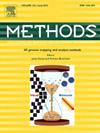Capturing G protein-coupled receptors into native lipid-bilayer nanodiscs using new diisobutylene/maleic acid (DIBMA) copolymers
IF 4.3
3区 生物学
Q1 BIOCHEMICAL RESEARCH METHODS
引用次数: 0
Abstract
Many membrane proteins, including G protein-coupled receptors (GPCRs), are susceptible to denaturation when extracted from their native membrane by detergents. Therefore, alternative methods have been developed, including amphiphilic copolymers that enable the direct extraction of functional membrane proteins along with their surrounding lipids. Among these amphiphilic copolymers, styrene/maleic acid (SMA) and diisobutylene/maleic acid (DIBMA) polymers have been extensively studied. Despite their many benefits, SMA and DIBMA polymers also have considerable drawbacks limiting their applications. Herein, we describe a series of new amphiphilic copolymers derived from DIBMA via partial amidation of the carboxylate pendant groups with various biocompatible amines. We characterize the new polymer’s nanodisc-forming properties and ability to extract the melanocortin 4 receptor (MC4R), a prototypical class A GPCR. While each new DIBMA variant displays features that may be favorable for selected applications, we identified a PEGylated DIBMA variant called mPEG4-DIBMA as particularly promising. In the tested system mPEG4-DIBMA abolishes unspecific interactions and outperforms other polymers by achieving higher extraction efficiencies of MC4R from Sf9 insect cell membranes. The new nanodisc-forming polymer combines two key advantages that are crucial for investigating GPCRs in a well-defined but still native lipid-bilayer environment, thus paving the way for manifold future applications.
利用新型二异丁烯/马来酸(DIBMA)共聚物将G蛋白偶联受体捕获到天然脂质双层纳米圆盘中。
许多膜蛋白,包括G蛋白偶联受体(gpcr),当被洗涤剂从其天然膜中提取时,容易变性。因此,替代方法已经开发出来,包括两亲性共聚物,可以直接提取功能膜蛋白及其周围的脂质。在这些两亲共聚物中,苯乙烯/马来酸(SMA)和二异丁烯/马来酸(DIBMA)聚合物得到了广泛的研究。尽管SMA和DIBMA聚合物有许多优点,但它们也有相当大的缺点,限制了它们的应用。在此,我们描述了一系列新的两亲性共聚物,这些共聚物是通过羧酸悬垂基团与各种生物相容性胺的部分酰胺化而得到的。我们表征了新聚合物的纳米圆盘形成特性和提取黑素皮质素4受体(MC4R)的能力,这是一种典型的a类GPCR。虽然每个新的DIBMA变体都显示出可能有利于选定应用的特征,但我们确定了一个称为mPEG4-DIBMA的聚乙二醇化DIBMA变体特别有前途。在测试的体系中,mPEG4-DIBMA消除了非特异性相互作用,并通过从Sf9昆虫细胞膜中获得更高的MC4R提取效率而优于其他聚合物。这种新型纳米盘状聚合物结合了两个关键优势,这对于在定义明确但仍然是天然脂质双分子层环境中研究gpcr至关重要,从而为未来的多种应用铺平了道路。
本文章由计算机程序翻译,如有差异,请以英文原文为准。
求助全文
约1分钟内获得全文
求助全文
来源期刊

Methods
生物-生化研究方法
CiteScore
9.80
自引率
2.10%
发文量
222
审稿时长
11.3 weeks
期刊介绍:
Methods focuses on rapidly developing techniques in the experimental biological and medical sciences.
Each topical issue, organized by a guest editor who is an expert in the area covered, consists solely of invited quality articles by specialist authors, many of them reviews. Issues are devoted to specific technical approaches with emphasis on clear detailed descriptions of protocols that allow them to be reproduced easily. The background information provided enables researchers to understand the principles underlying the methods; other helpful sections include comparisons of alternative methods giving the advantages and disadvantages of particular methods, guidance on avoiding potential pitfalls, and suggestions for troubleshooting.
 求助内容:
求助内容: 应助结果提醒方式:
应助结果提醒方式:


